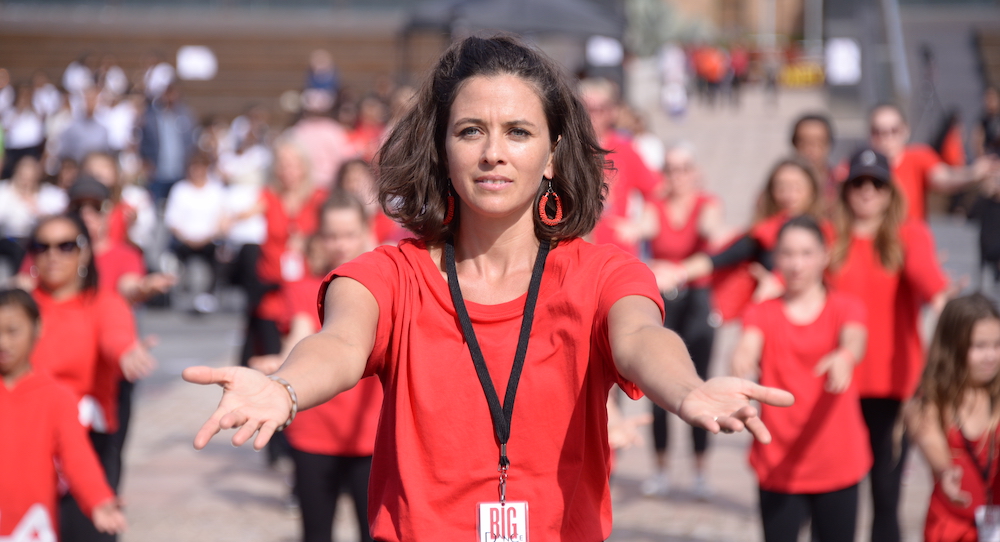Ausdance NSW exists to promote opportunities for dance in NSW. The organization runs a suite of programs from supporting professional dancers and choreographers in their practice, to creating more opportunities for dance participation amongst the community. Ausdance has just researched and launched a robust professional learning series for primary and secondary school teachers called Professional Arts Learning Series (PALS).

PALS Creative Arts Syllabus 2018. Image courtesy of Ausdance NSW.
Claire Gammon, PALS program manager at Ausdance NSW, says, “After some consultation with some tertiary teacher training providers, we became aware how little dance training teachers get when they are doing their Dip Ed’s. We heard a quote that throughout the whole of their training as generalist teachers, they have four hours of dance training. We are interested in giving our classroom teachers the tools to teach dance, so that it is not costly, which is very often why dance doesn’t get taught, when schools have to bring in specialist teachers.”
This year, in Term 1, Ausdance NSW is offering a professional learning day for generalist primary school teachers. Gammon explains, “A basic task-based lesson plan for K – 6 level should be in the tool box of every primary school teacher. We want to encourage teachers who would never consider themselves able to teach a dance class, to show them that they can, so that dance becomes another subject like reading and math. There are all sorts of wonderful statistics about how integrating dance into curriculum shows statistical growth in other learning areas.”

Big Dance 2018, Cathedral Square Sydney. Photo by Elise Lockwood.
Also in Term 1, Ausdance NSW is offering for secondary teachers an Urban Dance Day. The Urban Dance Day is facilitated by Urban Dance Group PHLY crew. “We are looking at the 7 – 10’s,” says Gammon, “to get the older students re-engaged with dance. We want to look at how we can use urban dance as an educational tool. We will discuss where urban dance came from. Using the language and music that the age group are currently listening to, in a generative, exploratory way. This course is for the teacher who thinks, ‘There is absolutely no way I am going to teach a hip hop class.’ We will show them they easily can.”
PALS also includes a workshop for teachers of HSC Units in specialist dance. Gammon says that the inclusion of this came from feedback from an HSC examiner who thought that the work being presented in exams was lacking in sophistication in composition. “We talked about refreshing teachers in their practice, so that they can take back new skills in terms of how they teach composition to their students,” says Gammon.
These teacher learnings are facilitated by professional artists with teaching degrees. Teachers are required to undertake a certain amount of professional development each year to continue their registration. Previous to this initiative, there has been no dance for professional teacher learning offered for primary and secondary teachers in NSW. This, in turn, depletes the skills, confidence of teachers and actual practice of teaching of dance in the curriculum.

Jamie Winbank and Mel Tyguin, ‘Inclusive Approaches to Teaching Dance’ in partnership with TAFE and ACFIBS. Photo courtesy of Ausdance NSW.
“This is one of our interests,” says Gammon. “Ausdance is meeting gaps in the industry, and have been endorsed by NESA as a professional learning provider, and teachers who attend can claim hours towards their competency.”
Curriculum-based art learning fosters creative problem-solving, emotional and symbolic literacy, and wellbeing. Students who can think creatively are more likely to succeed. Curriculum-based arts learning also creates humans who are more likely to seek out art subsequent to their study, and plenty of research supports that art increases quality of life and wellbeing. All the more reason to have great, inspired teachers working in the curriculum.
For more information on PALS, visit ausdancensw.com.au/professional-arts-learning-series.
By Tamara Searle of Dance Informa.















